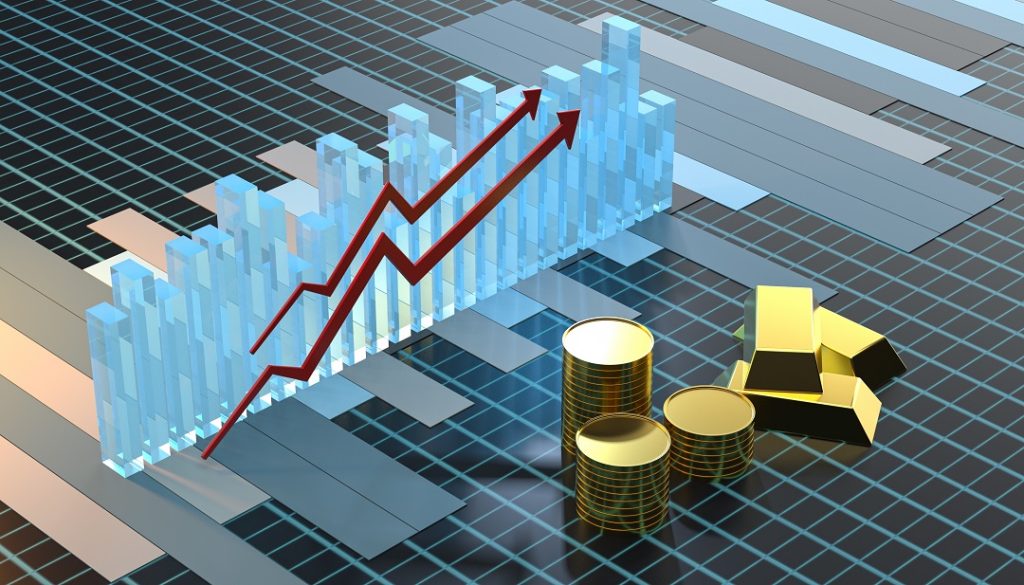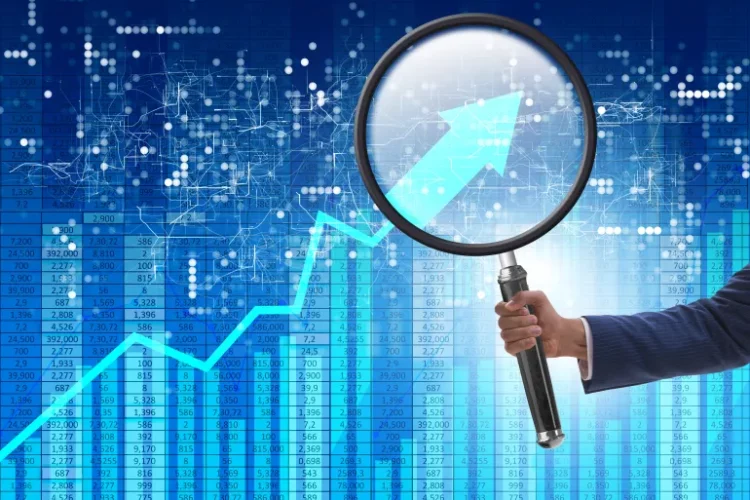Introduction
The global financial landscape is no stranger to volatility. From the aftermath of the 2008 financial crisis to the market disruptions triggered by the COVID-19 pandemic, financial markets have been subject to sharp fluctuations, creating uncertainty about the broader economic picture. As stock prices tumble, bond yields fluctuate, and credit markets tighten, distinguishing between short-term market noise and the genuine signals of economic recovery becomes a critical task for policymakers, businesses, and investors.
During periods of financial market turmoil, it can be difficult to separate economic distress from the cyclical fluctuations that are a natural part of market behavior. In such times, identifying the key indicators of economic recovery is essential for making informed decisions. While markets may reflect short-term panic or speculative behavior, economic recovery unfolds through more fundamental, long-term trends.
This article aims to explore how to judge the true signals of economic recovery in the context of financial market turmoil. By examining key economic indicators and market trends, we will outline how one can assess whether the recovery is real or simply a temporary bounce in the market.
1. Understanding Financial Market Turmoil and Its Impact on Economic Recovery
Before diving into the signs of economic recovery, it is essential to understand the relationship between financial market turmoil and economic performance. Financial markets are closely linked to economic fundamentals, but they also operate on psychological factors like investor sentiment, speculation, and risk appetite. These elements can cause short-term fluctuations that do not necessarily reflect underlying economic conditions.
1.1 The Role of Financial Markets in Economic Recovery
Financial markets—comprising equity, bond, currency, and commodity markets—act as both indicators and facilitators of economic recovery:
- Indicators: Financial markets reflect investor sentiment and expectations about future economic conditions. A rebound in stock prices or a reduction in credit spreads can signal that investors believe the economy is on the mend.
- Facilitators: Well-functioning financial markets provide the liquidity necessary for businesses to invest, expand, and hire, thus supporting economic growth.
However, financial markets can also be volatile, reacting to both real and perceived risks. This means that market movements can sometimes lead to false signals about the state of the economy. For example, a sharp rally in stock prices may indicate speculative buying rather than actual economic improvement.
1.2 Distinguishing Between Short-term Market Movements and Long-term Economic Trends
In times of financial market turmoil, short-term volatility may obscure the underlying economic trend. Market corrections, bear markets, and sudden sell-offs are common in periods of uncertainty but do not necessarily indicate prolonged economic weakness. Conversely, long-term economic recovery can be marked by gradual, stable improvements in economic indicators that extend beyond fleeting market fluctuations.
2. Key Signals of Economic Recovery Amid Financial Market Volatility
While financial markets can provide important clues about future economic trends, it is crucial to focus on the real economy—those indicators that reflect fundamental shifts in production, employment, and consumer behavior. Here are the key signals to watch for when assessing whether an economy is in recovery:
2.1 Rising Employment and Falling Unemployment Rates
One of the most reliable indicators of economic recovery is an improvement in the labor market. As economies recover, businesses tend to hire more workers to meet increasing demand for goods and services.
- Job growth: A consistent increase in the number of jobs being created across sectors signals that businesses are regaining confidence and investing in their workforce.
- Declining unemployment: A reduction in the unemployment rate, particularly long-term unemployment, is a key sign that the economy is transitioning from a recession to recovery.
However, it is important to consider the quality of the jobs being created. Are they full-time, permanent positions, or are they temporary and part-time roles? Strong recoveries are often characterized by improvements in both the quantity and quality of employment.
2.2 Increasing Consumer Confidence and Spending
Consumer confidence is a critical driver of economic recovery. As consumers become more optimistic about the future, they are more likely to spend, which in turn drives economic growth. Key indicators to watch include:
- Retail sales growth: A steady increase in retail sales is a sign that consumers are regaining their purchasing power and willingness to spend on goods and services.
- Consumer confidence indices: Surveys like the Consumer Confidence Index (CCI) or the University of Michigan Consumer Sentiment Index provide insights into consumer attitudes about the economy and their financial situations.
- Rising personal consumption expenditure (PCE): The PCE measures the total value of goods and services consumed by households. An increase in PCE is typically a sign that the economy is strengthening.
While consumer spending may rebound after an economic shock, it is essential to watch for a consistent, sustained increase rather than a short-lived surge driven by government stimulus or temporary factors.
2.3 Investment Activity and Business Confidence
Private sector investment is a crucial component of economic recovery. A rebound in business investment reflects optimism about future growth prospects and the belief that current conditions are conducive to expansion. Key signs include:
- Capital expenditure (CapEx): An increase in business spending on capital goods (e.g., machinery, technology, and infrastructure) is a positive sign. This indicates that companies are confident enough in the recovery to invest in their long-term growth.
- Business sentiment surveys: Indices such as the Purchasing Managers’ Index (PMI) provide valuable insight into business conditions. A PMI above 50 indicates that businesses are expanding, while a PMI below 50 suggests contraction.
- Foreign direct investment (FDI): A rise in FDI suggests that foreign investors are willing to commit capital to the economy, which is a strong signal of confidence in its growth potential.
2.4 Stable Inflation and Monetary Policy Adjustments
Inflation is often a sign of economic overheating, but during the early stages of recovery, moderate inflation is a sign of demand returning to the economy. Monitoring inflation trends alongside monetary policy is crucial:
- Stable inflation rates: If inflation remains relatively stable and within the central bank’s target range, it suggests that demand is recovering without the economy overheating. Excessive inflation, however, could signal that recovery is being driven by unsustainable demand, which might lead to stagflation or other problems down the line.
- Monetary policy stance: Central banks often adjust interest rates in response to economic conditions. A shift from aggressive rate cuts to rate hikes (in a low-interest-rate environment) could signal that the economy is strengthening and that inflationary pressures are becoming more significant. Conversely, maintaining low rates for an extended period can indicate a fragile recovery.
2.5 Improving Trade and Global Demand
Global trade is another crucial indicator of recovery, particularly for export-dependent economies. As global demand rebounds, countries that are heavily reliant on exports will see an improvement in their trade balance.
- Export growth: An increase in exports signals that foreign demand for a country’s goods and services is rising, which is typically a positive sign of economic recovery.
- Global economic conditions: Global growth and the recovery of major trading partners play a significant role. As other economies recover, global trade volumes typically increase, benefiting export-driven economies.

3. Warning Signs of a False Economic Recovery
While the above indicators suggest a genuine recovery, there are certain red flags that may indicate a false recovery or a fragile economic rebound:
3.1 Overreliance on Government Stimulus
In the aftermath of crises, governments often implement stimulus measures to stimulate demand. If an economy’s recovery is heavily reliant on continued government spending or monetary easing, the recovery may not be sustainable. A true recovery should see businesses and consumers returning to the market without the need for extensive government intervention.
3.2 Asset Price Bubbles
Rapid increases in asset prices—such as real estate, stocks, or cryptocurrencies—without corresponding improvements in the underlying economy can indicate a speculative bubble. While markets may recover in the short term, asset price inflation that outpaces actual economic growth can lead to instability in the longer run.
3.3 Rising Income Inequality
If economic recovery is concentrated in certain sectors or regions, rather than being broadly distributed across the economy, it can lead to rising income inequality. A true recovery should improve living standards across different segments of society, not just the wealthiest individuals or industries.
Conclusion
Identifying the true signals of economic recovery amid financial market turmoil requires a careful and nuanced approach. While financial markets can provide early clues about recovery, it is essential to look beyond short-term fluctuations and focus on long-term, fundamental indicators. Rising employment, increasing consumer confidence and spending, improving business investment, stable inflation, and growing trade all point to a sustainable recovery.
However, caution is necessary, as false signals such as government dependency or asset price bubbles can create illusions of growth. By examining these critical indicators and understanding their implications, policymakers, businesses, and investors can better assess whether an economy is genuinely on the path to recovery or whether it is simply experiencing a temporary market rebound.

















































